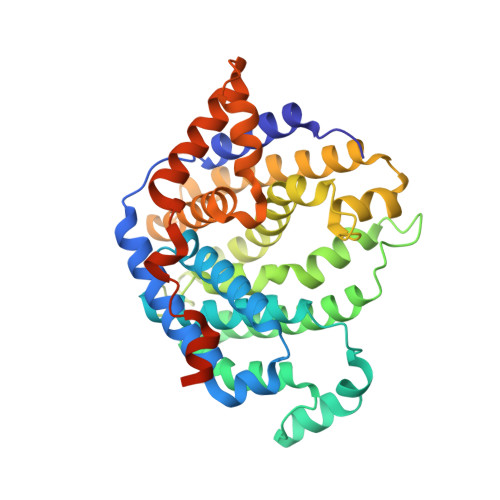X-ray crystal structures of D100E trichodiene synthase and its pyrophosphate complex reveal the basis for terpene product diversity.
Rynkiewicz, M.J., Cane, D.E., Christianson, D.W.(2002) Biochemistry 41: 1732-1741
- PubMed: 11827517
- DOI: https://doi.org/10.1021/bi011960g
- Primary Citation of Related Structures:
1KIY, 1KIZ - PubMed Abstract:
The 2.4 A resolution X-ray crystal structure of D100E trichodiene synthase and the 2.6 A resolution structure of its complex with inorganic pyrophosphate are reported. The D100E amino acid substitution in the so-called "aspartate-rich" motif does not result in large changes to the overall structure of the enzyme. In the pyrophosphate complex, however, pyrophosphate coordinates two Mg(2+) ions at the mouth of the active site without causing large changes in the structure of the enzyme. This contrasts with pyrophosphate binding in the wild-type enzyme, where pyrophosphate coordinates three Mg(2+) ions and triggers a significant conformational change that closes the mouth of the active site and optimizes packing density in the enzyme-substrate complex. The attenuation of active site closure in D100E trichodiene synthase compromises enzyme-substrate packing density and confers additional spatial and conformational degrees of freedom on the substrate and carbocation intermediates, which in turn results in the formation of five alternate sesquiterpene products in addition to trichodiene. By extension, then, the diversity of terpene cyclases in biology may have evolved in part by amino acid substitutions that fine-tune structural changes dependent on metal-diphosphate complexation that govern the formation of the active site template and enzyme-substrate packing density.
Organizational Affiliation:
Department of Chemistry, University of Pennsylvania, Philadelphia, Pennsylvania 19104-6323, USA.

















